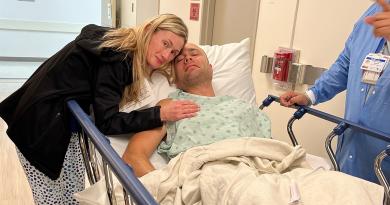Is interventional pain medicine right for you?
Lower back and neck pain impacts people of all ages. There are many ways to treat different types of discomfort, and interventional medicine may be the right path to pain relief for some. But how does it work?
“With interventional pain medicine, treating back and neck pain begins with a conservative approach prior to considering surgery. I work closely with each patient to develop a plan that is unique and sustainable,” said Dr. Krishna Shah, an interventional pain medicine physician at Baylor Medicine. “Conservative treatment options include physical therapy, medications and injections. If patients do not respond to conservative therapy, they are referred for a surgical evaluation by one of our spine surgeons.”
During the initial visit, the physician and patient thoroughly discuss the history of the pain condition, and a physical exam is performed. The physician typically tries to find the source of pain with diagnostic imaging, either through an X-ray or MRI to look for structural abnormalities.
Based on the imaging and exam, the pain specialist tries to optimize the patient outcome by including a combination of each of the three main categories of treatment: intervention, physical therapy and/or medication. Interventions such as injections are commonly used to help alleviate pain.
“The main reasons of performing injections are to provide a pain-free period to allow patients to participate in physical therapy or to aid in diagnosis for surgical planning.”
The following are different types of interventional treatments that Dr. Shah uses in his practice:
- Epidural steroid injections: for patients with disc herniation or sciatic pain
- Facet injections: for patients with arthritis of small joints in the back
- Joint injections: cortisone injected into knee, hip or shoulder joint for pain relief
- Radiofrequency ablations: heat application to a specific nerve to stop the transmission of pain
- Peripheral nerve blocks: injection of cortisone to a specific nerve to stop the transmission of pain
- Spinal cord stimulation: for patients with persistent back or neck pain who have failed other interventions, but are not candidates for surgery
- Kyphoplasty: for patients with vertebral compression fractures
Although Shah treats all types of pain, the majority of his patients have spine-related pain. Back pain is the single-leading cause of disability, according to Shah.
“Back pain often interferes with patients’ daily activities. When we are able to target the exact location of someone’s back or neck pain with interventional techniques, we can improve their quality of life and help provide optimal surgical planning if necessary.”
Interested in visiting an interventional pain specialist? The first step is to meet with your primary care physician to discuss if an interventional pain management referral is appropriate. Typically, patients get imaging followed by physical therapy. If the pain does not subside, or the individual cannot participate in physical therapy, they will be referred to a specialist to consider injections or interventions.
Alternatively, you can schedule an appointment directly with a specialist to determine if interventions are appropriate for you.
Dr. Shah is an assistant professor of anesthesiology at Baylor College of Medicine. Learn more about Interventional Pain Medicine services and the Spine Center at Baylor or call 713-798-2225.
-By Homa Shalchi




